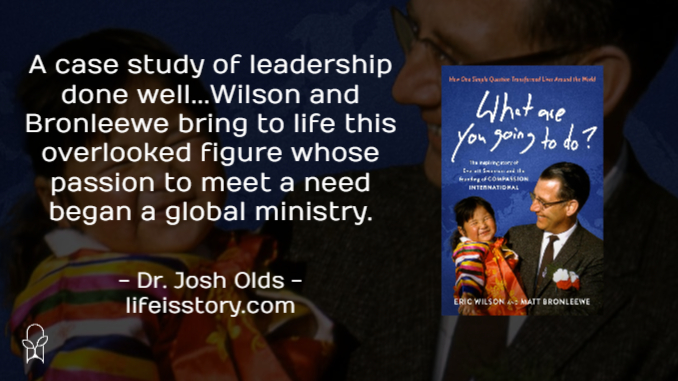
Also by this author: 1 Step Away, The Best of Evil, A Shred of Truth, Expiration Date, Dark to Mortal Eyes, American Leftovers, What Are You Going to Do?: The Inspiring Story of Everett Swanson and the Founding of Compassion International, What Are You Going to Do?: How One Simple Question Transformed Lives Around the World: The Inspiring Story of Everett Swanson and the Founding of Compassion International, Taming the Beast: The Untold Story of Mike Tyson, Confessions of a Former Prosecutor: Abandoning Vengeance and Embracing True Justice
Goodreads
Several years ago, my wife and I began donate monthly to Compassion International to sponsor a child. Over the years, we’ve exchanged letters and watched that kid grow to adulthood. Giving money can sometimes feel so impersonal. Actually seeing the specific benefit that your money is having on a specific person not only drives giving, but builds relational connection. Compassion restores the soul into what might otherwise just be a perfunctory, soulless charitable task. And we aren’t the only ones to do this. Currently, 2.2 million children and young adults receive sponsorship funds from Compassion. A secular independent study from the Journal of Political Economy found “large, statistically significant impacts on years of schooling; primary, secondary, and tertiary school completion; and the probability and quality of employment” for those who were sponsored. But where did it all begin?
What Are You Going to Do? is the story of that beginning. The title is a reference to the question that kept coming back to Compassion’s founder, Everett Swanson, when he arrived in South Korea to preach to US troops in Seoul. Confronted by the realities of a country torn apart by war and poverty, Swanson knew that more war wasn’t the answer. And from that question, Compassion International began.
They say you should never meet your heroes. While I knew that Compassion was doing good, beneficial work currently, I also knew that many attempts at Christian charity were clothed in a veneer of racism and colonialism. I was very worried that I would find that Swanson—perhaps well-intentioned and genuine—based his ministry on a foundation that would be problematic at best. What Are You Going to Do? assuaged those concerns. Swanson appears to have had a genuine desire to build the ministry from within, partnering with ministry leaders within South Korea, and giving a lot of freedom to local organizations to run and grow the program.
The book takes us from the beginnings of Compassion, through its growing pains, and even through times of turmoil and internal corruption. Through it all, Swanson remains committed to the ministry, committed to growth, committed to doing all that he can to alleviate poverty—first in Korea then throughout the world.
What Are You Going to Do made me realize that, for such a prominent organization, I really knew nothing about its founder. To be honest, before reading this book, I probably couldn’t have told you his name was Everett Swanson. In an age where ministries get named after their founders, where organizations with strong leaders struggle to continue into a second generation, where the name of the leader was what drove donations, it’s refreshing to see how Compassion managed to remain a community effort, not contingent on Swanson’s name—or that Swanson attempted to use Compassion to build his own celebrity.
Instead, Swanson passed in 1965 and the organization he created has outlived him, growing exponentially while remaining true to his original commitments. What Are You Going to Do is a case study of leadership done well. It’s really quite incredible that it took almost fifty years for there to be any dedicated biography of Swanson—perhaps a testament to Swanson’s humility and desire to place his ministry above himself.
What Are You Going to Do feels a bit like a family history at times. And that’s because that authors, Matt Bronleewe and Eric Wilson, don’t approach their work as investigative journalists but as family biographers. Their sources are Swanson’s family and Compassion itself. In fact, the genesis of the project comes from the fact that Bronleewe’s wife is Swanson’s great-niece. So there’s a hominess to the book. It’s written in a conversational style that fictionalizes some conversations for the sake of narrative. It includes an insert of photos of Swanson throughout his life and ministry. It brings to life this overlooked figure whose simple determination to meet a need led to a global ministry.
